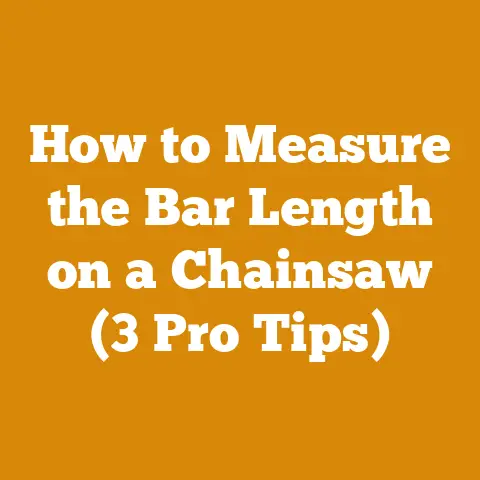When to Trim Bradford Pear Trees (5 Pro Arborist Tips)
Imagine transforming an overgrown, unsightly Bradford pear tree into a beautiful, healthy centerpiece of your landscape.
That’s what proper trimming can do.
But timing is everything, and understanding the “when” is just as crucial as the “how.” Many homeowners, myself included in my earlier days, have learned the hard way that improper trimming can lead to weak growth, disease, and even tree failure.
That’s why I’m sharing these pro arborist tips to guide you through the process, and help you avoid costly mistakes.
When to Trim Bradford Pear Trees (5 Pro Arborist Tips)
Bradford pear trees, known for their early spring blossoms, can quickly become a problem if left unmanaged.
Their weak branch structure makes them prone to storm damage, and their tendency to spread aggressively can disrupt local ecosystems.
Knowing when to trim these trees is essential for maintaining their health, appearance, and safety.
1. Late Winter/Early Spring: The Ideal Time for Structural Pruning
The absolute best time to trim Bradford pear trees is during their dormant period, which typically falls in late winter or early spring, before new growth begins.
I’ve found this timing to be crucial for several reasons:
- Visibility: With no leaves on the tree, you have a clear view of the branch structure, allowing you to identify and address any weaknesses or potential problems.
- Reduced Sap Flow: During dormancy, sap flow is minimal, which reduces stress on the tree and minimizes the risk of disease transmission.
- Faster Wound Closure: As the weather warms and the tree emerges from dormancy, it will quickly begin to heal pruning wounds, preventing decay and promoting strong new growth.
My Experience: I remember one year, I waited too long to prune a Bradford pear on my property.
By the time I got around to it, the tree had already started to leaf out.
The cuts bled sap excessively, and the tree seemed noticeably stressed.
I learned my lesson – stick to the late winter/early spring window!
Cost Implications: Pruning during dormancy often results in lower labor costs if you’re hiring a professional arborist.
Because the branches are easier to see and work with, the job usually takes less time.
I’ve seen quotes vary by as much as 20% depending on the timing of the pruning.
2. Summer Pruning: For Shaping and Light Maintenance
While late winter/early spring is ideal for structural pruning, summer pruning can be useful for shaping the tree, removing water sprouts (those fast-growing, vertical shoots that emerge from the trunk or branches), and addressing minor issues.
- Shaping: Summer pruning allows you to maintain the tree’s desired shape and size, preventing it from becoming overgrown.
- Water Sprout Removal: Water sprouts are weak and detract from the tree’s overall appearance.
Removing them in the summer prevents them from becoming larger and more difficult to manage later. - Targeted Problem Solving: If you notice a broken or diseased branch during the summer, you can remove it promptly to prevent further damage or spread of disease.
My Insight: I’ve found that light summer pruning, especially for water sprout removal, can significantly reduce the amount of heavy pruning needed in the winter.
It’s like preventative maintenance for your tree.
Cost Considerations: Summer pruning is typically less expensive than winter pruning, as it usually involves less extensive work.
However, be mindful of the potential for sunburn on newly exposed branches, especially in hot climates.
3. Avoid Fall Pruning: Risk of Disease and Winter Damage
Fall is generally not a good time to prune Bradford pear trees.
The tree is preparing for dormancy, and pruning at this time can disrupt this process and make it more vulnerable to disease and winter damage.
- Disease Susceptibility: Fungal spores are often more prevalent in the fall, and pruning wounds provide an entry point for these pathogens.
- Delayed Healing: As the weather cools, the tree’s ability to heal pruning wounds slows down, leaving it susceptible to decay and insect infestation.
- Winter Injury: Freshly pruned branches are more susceptible to winter injury, such as frost cracking and dieback.
My Mistake: Years ago, I pruned a Bradford pear in the fall, thinking I was getting a head start on winter preparations.
The following spring, I was dismayed to see several branches with severe dieback.
I learned that fall pruning is a gamble that rarely pays off.
Cost Analysis: Fall pruning can lead to increased costs in the long run if it results in disease or winter damage.
You may need to hire an arborist to treat the tree or even remove it altogether.
4. Pruning Young Trees: Focus on Structure Early
The best time to start pruning Bradford pear trees is when they are young.
Early pruning helps to establish a strong, well-balanced structure, which reduces the risk of problems later in life.
- Central Leader: Encourage a strong central leader (the main trunk) by removing competing branches.
- Wide Branch Angles: Select branches with wide angles of attachment to the trunk, as these are less likely to break under heavy loads.
- Proper Spacing: Space branches evenly along the trunk to prevent overcrowding and promote good air circulation.
My Tip: When planting a new Bradford pear, I always prune it lightly to remove any damaged or crossing branches.
This gives the tree a head start and sets the stage for future growth.
Budgeting for Young Trees: The cost of pruning young trees is relatively low, but it’s a worthwhile investment in their long-term health and structural integrity.
Consider including pruning in your annual landscaping budget.
5. Emergency Pruning: When Safety is a Concern
Sometimes, you may need to prune a Bradford pear tree outside of the ideal times due to safety concerns.
- Broken or Hanging Branches: If a branch is broken or hanging precariously, it should be removed immediately to prevent injury or property damage.
- Diseased Branches: If you notice a branch with severe disease symptoms, such as cankers or fungal growth, it should be removed to prevent the spread of the disease.
- Obstructions: If a branch is obstructing a walkway, driveway, or power line, it should be pruned to eliminate the hazard.
My Caution: Always prioritize safety when pruning, especially when dealing with large or potentially dangerous branches.
If you’re not comfortable performing the work yourself, hire a qualified arborist.
Emergency Cost Planning: Emergency pruning can be expensive, especially if it requires specialized equipment or expertise.
It’s a good idea to have an emergency fund set aside for unexpected tree care expenses.
Understanding the Bradford Pear Tree’s Growth Cycle
To properly time your pruning, it’s essential to understand the Bradford pear tree’s growth cycle.
This knowledge will help you make informed decisions about when and how to prune.
Key Stages of Growth
- Dormancy (Late Winter/Early Spring): The tree is inactive, with no leaves or flowers.
This is the ideal time for structural pruning. - Flowering (Early Spring): The tree bursts into bloom with masses of white flowers.
Avoid pruning during this time, as it will remove the flowers. - Leaf Development (Spring): New leaves emerge, and the tree begins to actively photosynthesize.
Summer pruning can be done during this stage. - Summer Growth (Summer): The tree continues to grow and develop, storing energy for the winter.
Light shaping and water sprout removal can be done during this time. - Dormancy Preparation (Fall): The tree begins to shut down, drawing nutrients from the leaves and preparing for winter.
Avoid pruning during this time.
The Impact of Pruning on Growth
Pruning stimulates new growth, so the timing of pruning can influence the type and amount of growth that occurs.
Pruning during dormancy encourages strong, vigorous growth in the spring, while pruning during the summer tends to slow growth and promote branching.
Tools of the Trade: Investing in the Right Equipment
Having the right tools is essential for safe and effective pruning.
Here’s a rundown of the tools I use and recommend:
- Hand Pruners: For small branches (up to ¾ inch diameter).
I prefer bypass pruners, as they make cleaner cuts than anvil pruners.
Cost: \$20-\$50. - Loppers: For larger branches (up to 2 inches diameter).
Loppers provide more leverage than hand pruners.
Cost: \$40-\$80. - Pruning Saw: For branches too large for loppers (up to 4 inches diameter).
Choose a saw with a sharp, aggressive blade.
Cost: \$30-\$60. - Pole Saw: For reaching high branches without a ladder.
Pole saws can be manual or powered.
Cost: \$50-\$200. - Chainsaw: For large branches and tree removal.
Only use a chainsaw if you have experience and proper safety equipment.
Cost: \$150-\$500+. - Safety Gear: Safety glasses, gloves, a hard hat, and appropriate clothing are essential for protecting yourself from injury.
Cost: \$50-\$100.
Cost-Benefit Analysis: Investing in high-quality tools will save you money in the long run.
Cheap tools are more likely to break or become dull, requiring frequent replacement.
The Art of the Cut: Proper Pruning Techniques
Knowing when to prune is only half the battle.
You also need to know how to make proper pruning cuts.
The 3-Cut Method for Large Branches
When removing a large branch, use the 3-cut method to prevent tearing the bark:
- Undercut: Make a cut on the underside of the branch, a few inches from the trunk.
- Top Cut: Make a cut on the top of the branch, a few inches further out than the undercut.
The branch will break off between these two cuts. - Collar Cut: Make a final cut just outside the branch collar (the swollen area where the branch joins the trunk).
Avoid cutting into the branch collar, as this can damage the tree’s healing mechanism.
Other Important Techniques
- Thinning Cuts: Remove entire branches back to their point of origin.
This opens up the canopy and improves air circulation. - Heading Cuts: Shorten branches by cutting them back to a bud or side branch.
This encourages branching and can be used to shape the tree. - Cleaning Cuts: Remove dead, diseased, or damaged branches.
- Water Sprout Removal: Remove water sprouts at their point of origin.
Addressing Common Bradford Pear Problems
Bradford pear trees are prone to certain problems that can be addressed through proper pruning.
Weak Branch Structure
Bradford pears are notorious for their weak branch structure, which makes them susceptible to storm damage.
Pruning to promote a strong central leader and wide branch angles can help to mitigate this problem.
Overcrowding
Bradford pears can become overcrowded if not properly pruned.
Thinning cuts can help to open up the canopy and improve air circulation, reducing the risk of disease.
Disease
Bradford pears are susceptible to various diseases, such as fire blight and leaf spot.
Pruning to remove diseased branches can help to prevent the spread of these diseases.
The Cost of Neglect: What Happens If You Don’t Prune?
Neglecting to prune your Bradford pear tree can lead to a variety of problems, including:
- Weak Branch Structure: Unpruned trees are more likely to develop weak branch structures, making them susceptible to storm damage.
- Overcrowding: Unpruned trees can become overcrowded, leading to poor air circulation and increased risk of disease.
- Disease: Unpruned trees are more susceptible to disease, as dead or diseased branches can harbor pathogens.
- Unsightly Appearance: Unpruned trees can become overgrown and unsightly, detracting from the beauty of your landscape.
- Safety Hazards: Unpruned trees can pose safety hazards, as broken or hanging branches can fall and cause injury or property damage.
The Price of Inaction: The cost of neglecting to prune your Bradford pear tree can be significant, ranging from minor aesthetic issues to major structural problems that require professional intervention.
Hiring a Professional Arborist: When to Call in the Experts
While you can handle some pruning tasks yourself, there are times when it’s best to hire a professional arborist.
When to Hire an Arborist
- Large Trees: Pruning large trees can be dangerous and requires specialized equipment and expertise.
- Difficult Access: If the tree is located in a difficult-to-access area, such as near power lines or over a building, it’s best to hire an arborist.
- Complex Pruning: If the tree requires complex pruning, such as structural pruning or disease management, it’s best to hire an arborist.
- Safety Concerns: If you’re not comfortable performing the work yourself, hire an arborist.
Cost of Hiring an Arborist
The cost of hiring an arborist can vary depending on the size and complexity of the job.
Here are some general guidelines:
- Small Trees: \$100-\$300
- Medium Trees: \$300-\$700
- Large Trees: \$700+
Factors Affecting Cost: The cost of hiring an arborist can be affected by factors such as the tree’s size, location, and condition, as well as the arborist’s experience and credentials.
Getting Multiple Quotes: Always get multiple quotes from different arborists before hiring one.
This will help you to ensure that you’re getting a fair price.
Cost-Saving Strategies for Bradford Pear Tree Care
While tree care can be expensive, there are several strategies you can use to save money.
Do-It-Yourself Pruning
If you’re comfortable performing the work yourself, you can save money by doing your own pruning.
However, be sure to follow proper pruning techniques and prioritize safety.
Regular Maintenance
Regular maintenance, such as light pruning and fertilization, can help to prevent problems that require more expensive interventions later on.
Choosing the Right Tree
If you’re planting a new tree, consider choosing a species that is less prone to problems than Bradford pears.
There are many other beautiful and low-maintenance trees that can enhance your landscape.
Negotiating Prices
Don’t be afraid to negotiate prices with arborists.
You may be able to get a discount by scheduling the work during the off-season or by bundling multiple services.
Alternative Trees to Consider: Avoiding the Bradford Pear Problem
Given the Bradford pear’s structural weaknesses and invasive tendencies, consider these alternative trees for your landscape:
- Serviceberry (Amelanchier spp.): Offers beautiful spring flowers, edible berries, and attractive fall foliage.
- Dogwood (Cornus florida): Known for its showy bracts (often mistaken for petals) and attractive branching pattern.
- Redbud (Cercis canadensis): Features vibrant pink flowers in early spring and heart-shaped leaves.
- Crabapple (Malus spp.): Provides spring blossoms, colorful fruit, and attractive form. Choose disease-resistant varieties.
- Hawthorn (Crataegus spp.): Offers spring flowers, berries, and interesting bark.
Cost Comparison: While the initial cost of these trees may be similar to that of a Bradford pear, their long-term maintenance costs are likely to be lower due to their stronger structure and lower susceptibility to disease.
The Long-Term Value of Proper Tree Care
Investing in proper tree care, including timely and effective pruning, is an investment in the long-term health, beauty, and value of your property.
A well-maintained tree can provide shade, reduce energy costs, improve air quality, and increase property values.
Return on Investment: While it may seem like an expense, proper tree care can provide a significant return on investment over the life of the tree.
Case Studies: Real-World Examples of Pruning Costs
To give you a better sense of the costs involved in Bradford pear tree pruning, here are a few real-world case studies:
- Case Study 1: Small Bradford Pear in Residential Yard: A homeowner hired an arborist to prune a small Bradford pear tree (15 feet tall) in their residential yard.
The pruning included removing dead and diseased branches and shaping the tree.
The total cost was \$200. - Case Study 2: Medium Bradford Pear with Storm Damage: A homeowner had a medium-sized Bradford pear tree (25 feet tall) that had suffered storm damage.
The arborist removed broken branches and performed structural pruning to improve the tree’s stability.
The total cost was \$500. - Case Study 3: Large Bradford Pear Removal: A homeowner had a large, overgrown Bradford pear tree (40 feet tall) that was posing a safety hazard.
The arborist removed the tree and ground the stump.
The total cost was \$1200.
Key Takeaways: These case studies illustrate the range of costs associated with Bradford pear tree pruning, depending on the size and condition of the tree, as well as the type of work required.
Practical Tips for Budgeting Your Tree Care
Here are some practical tips for budgeting your tree care expenses:
By following these pro arborist tips, you can ensure that your trees stay healthy, beautiful, and safe for years to come.
Remember, a pruned tree is a happy tree, and a happy tree adds value to your property and enjoyment to your life.
Actionable Takeaways:
- Prune in Late Winter/Early Spring: This is the ideal time for structural pruning.
- Focus on Young Trees: Early pruning is essential for establishing a strong structure.
- Avoid Fall Pruning: This can increase the risk of disease and winter damage.
- Invest in Quality Tools: The right tools will make pruning easier and safer.
- Consider Alternatives: If planting a new tree, consider species other than Bradford pear.
Armed with this knowledge, you’re well-equipped to tackle your Bradford pear tree pruning projects with confidence.
Happy pruning!






